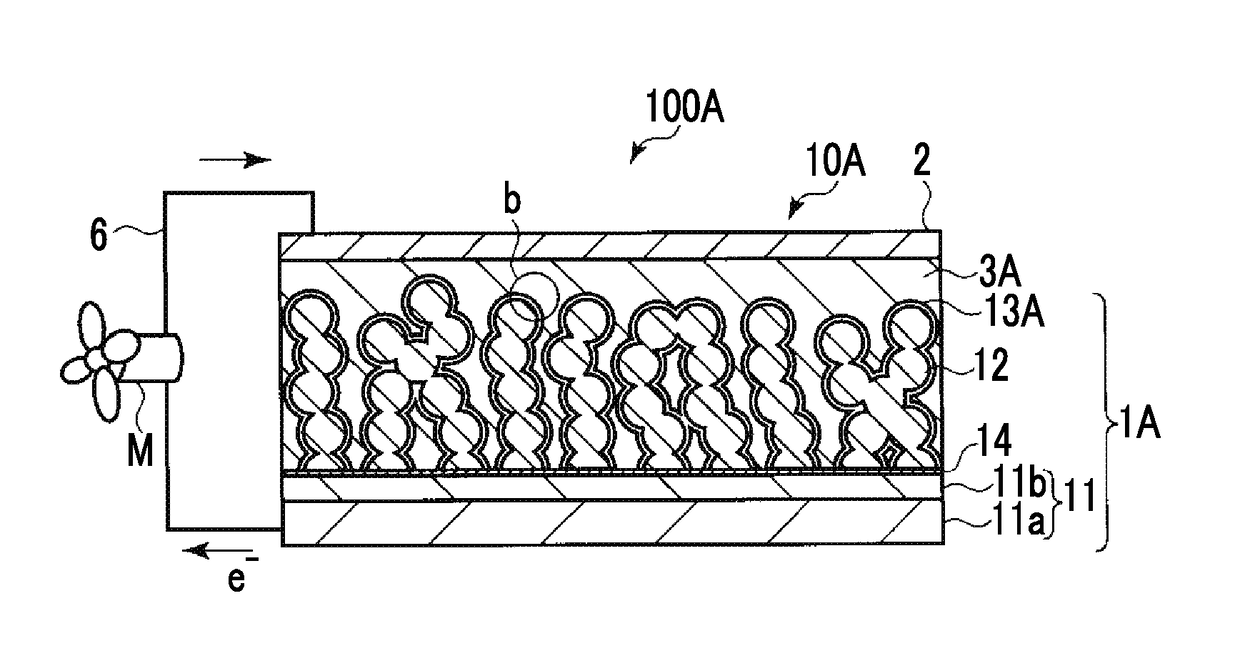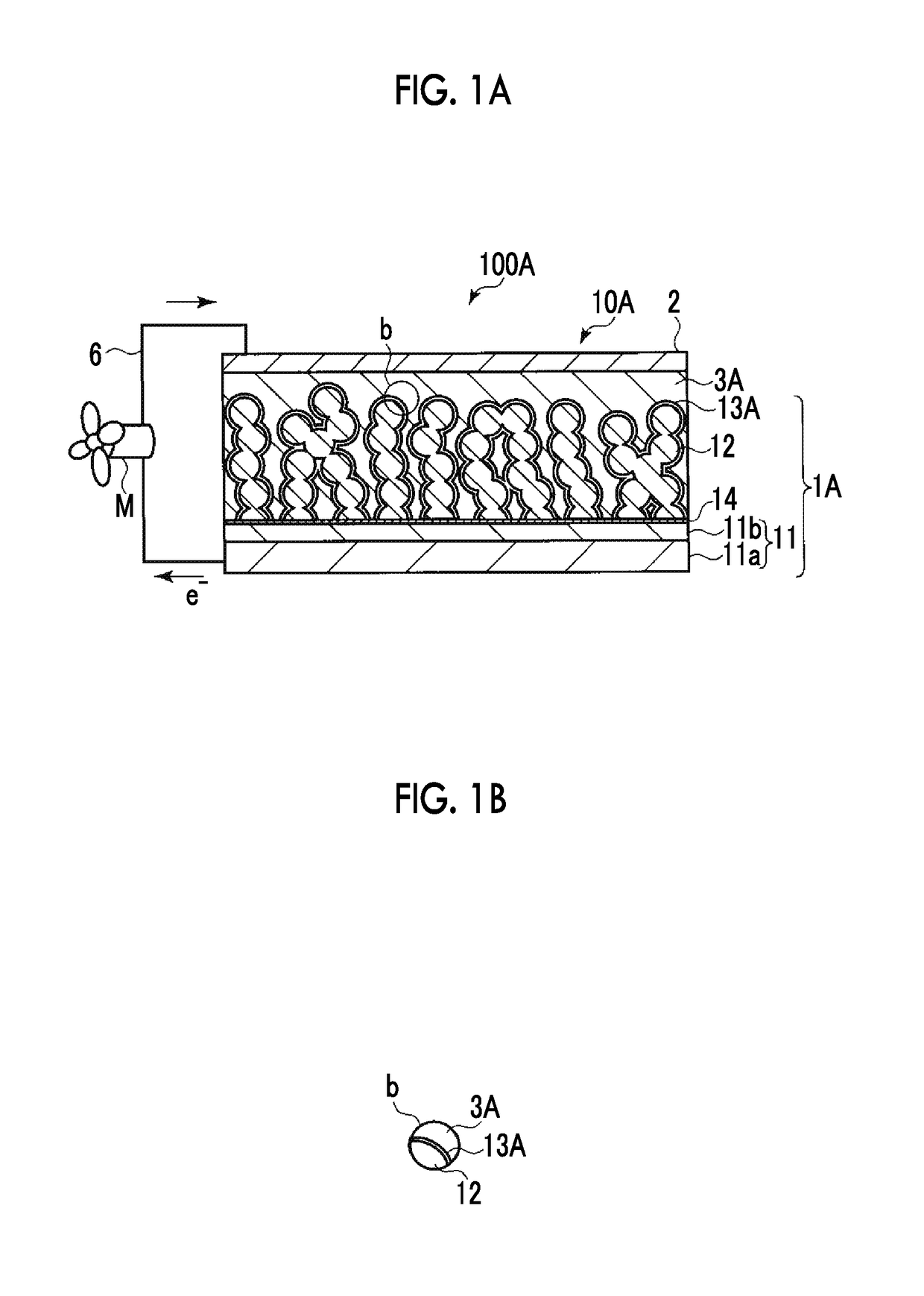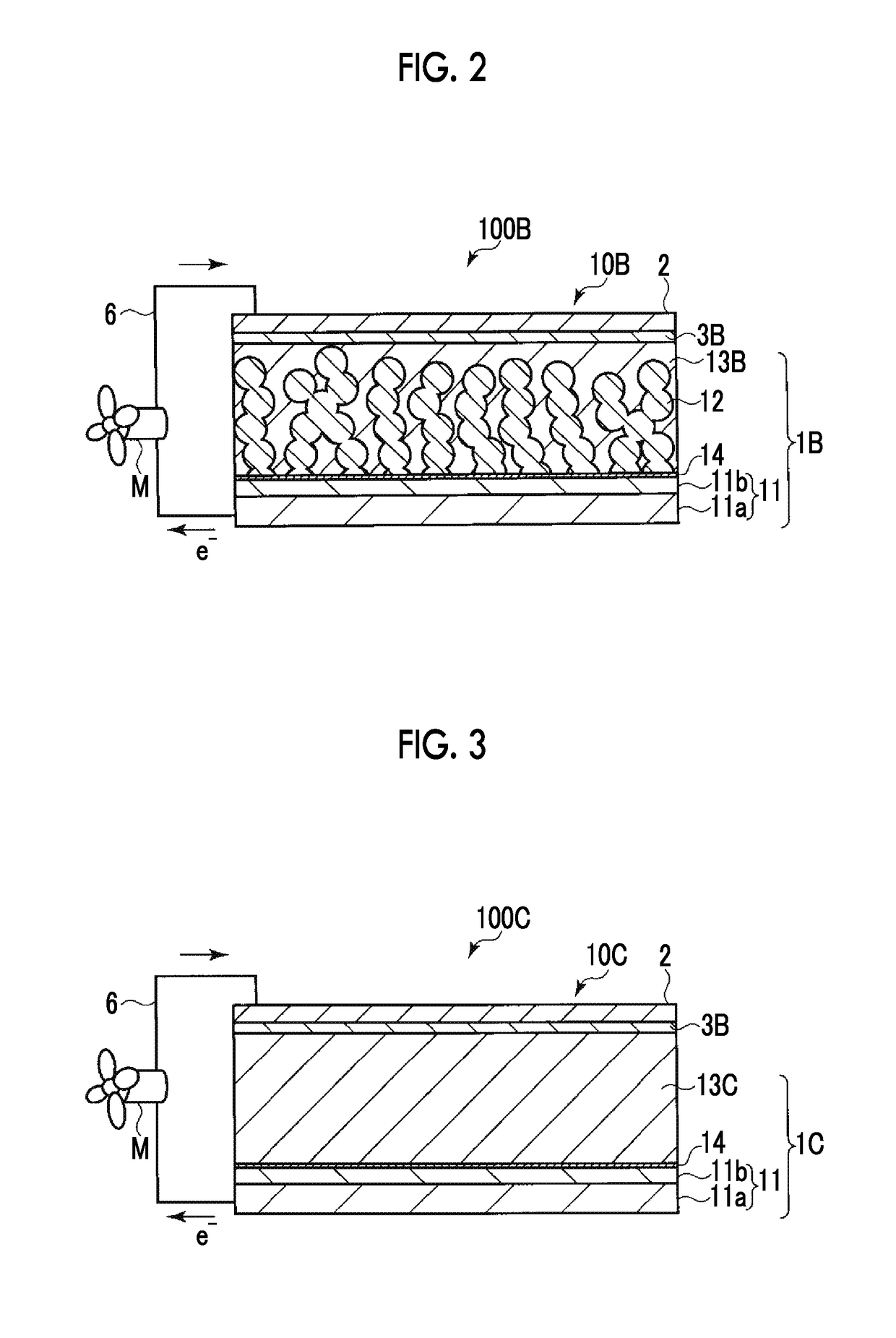Photoelectric conversion element, and solar cell using the same
a conversion element and solar cell technology, applied in the direction of basic electric elements, capacitors, light-sensitive devices, etc., can solve the problem of low moisture resistance and achieve the effect of low moisture resistan
- Summary
- Abstract
- Description
- Claims
- Application Information
AI Technical Summary
Benefits of technology
Problems solved by technology
Method used
Image
Examples
examples
[0239]The photoelectric conversion element 10A and the solar cell illustrated in FIG. 1A were manufactured in the following procedure. In a case where the film thickness of the photosensitive layer 13 is large, this case corresponds to the photoelectric conversion element 10B and the solar cell illustrated in FIG. 2.
[0240][Preparation of Conductive Support]
[0241]As the transparent electrode 11b, a fluorine-doped SnO2 conductive film having a film thickness of 300 nm was formed on a glass substrate having a thickness of 2.2 mm as the support 11a, thereby preparing the conductive support 11.
[0242][Preparation of Solution for Blocking Layer]
[0243]15% by mass of titanium diisopropoxide bis(acetylacetonate) / isopropanol solution (manufactured by Sigma-Aldrich Co. LLC) was diluted with 1-butanol, thereby preparing 0.02 M solution for a blocking layer.
[0244][Formation of Blocking Layer]
[0245]The blocking layer 14 formed from titanium oxide, which has a film thickness of 100 nm, was formed o...
PUM
 Login to View More
Login to View More Abstract
Description
Claims
Application Information
 Login to View More
Login to View More - R&D
- Intellectual Property
- Life Sciences
- Materials
- Tech Scout
- Unparalleled Data Quality
- Higher Quality Content
- 60% Fewer Hallucinations
Browse by: Latest US Patents, China's latest patents, Technical Efficacy Thesaurus, Application Domain, Technology Topic, Popular Technical Reports.
© 2025 PatSnap. All rights reserved.Legal|Privacy policy|Modern Slavery Act Transparency Statement|Sitemap|About US| Contact US: help@patsnap.com



